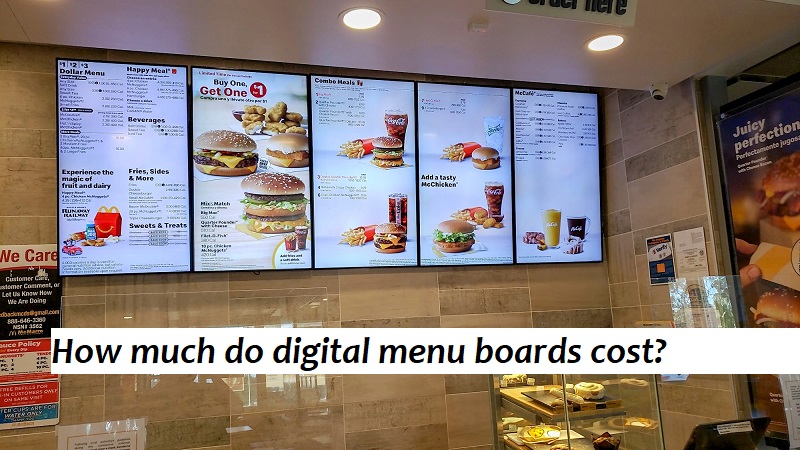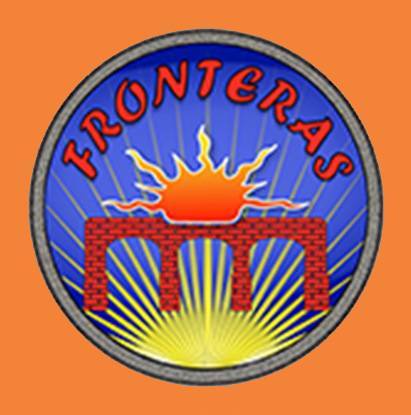In the bustling world of restaurants, first impressions and seamless customer experiences are paramount. With the rise of technology, the traditional static menu boards are giving way to their dynamic digital counterparts. Digital menu boards not only add a modern touch to your establishment but also offer versatility, allowing you to update menus, promote specials, and engage customers in real-time. However, the question remains: How much do digital menu boards really cost? Let’s delve into the various factors influencing their price and how you can make informed decisions for your business.
What is Digital Menu Boards ?
Digital menu boards are basically electronic displays that show menus, instead of traditional printed menus. They’re like TVs mounted on the wall, often seen in restaurants, cafes, and fast food places.
Here are some key things about digital menu boards:
- Dynamic displays: You can show more than just menus. They can be used for specials, promotions, eye-catching images, and even customer reviews.
- Easy to update: No more reprinting menus! With software, you can change things on the digital menu board quickly and easily.
- More engaging: Digital menus can use animations and bright colors to grab attention compared to static printed menus.
Overall, digital menu boards are a modern way to display menus and can offer some advantages over traditional menus.
Importance of Digital Menu Boards
Digital menu boards offer several advantages for businesses, making them an important tool in today’s market. Here’s why they hold weight:

Enhanced Customer Experience: Digital menus can be more visually appealing with high-quality images and videos, making food look more tempting . This can lead to increased sales and happier customers.
Improved Operational Efficiency: They save time and money on printing physical menus and allow for easy updates on the fly. Staff doesn’t need to swap out menus for daily specials or price changes .
Data and Analytics: Some digital menus track what customers look at the most. This valuable data can help businesses understand customer preferences and optimize their menus for better sales [6].
Flexibility and Control: Menus can be programmed to switch between breakfast, lunch, and dinner options automatically. They can also be used to promote specific items or display nutritional information [5].
Reduced Waste: Digital menus eliminate the need for constant printing, which is more environmentally friendly and reduces costs associated with paper menus .
Overall, digital menu boards can be a game-changer for businesses by improving customer experience, streamlining operations, and providing valuable data for informed decision-making.
Operating principle of digital menu boards
Digital menu boards rely on a combination of hardware and software to function:
Hardware:
- Display: This is the main component, typically a flat-panel LCD screen or a brighter LED display.
- Media Player: A small computer device like a digital signage player is attached to the display. It receives and processes the digital menu content.
- Mounting Hardware: Brackets or stands hold the display securely in place.
Software:
- Content Management System (CMS): This software allows you to create, edit, and schedule your digital menu content. It runs on a computer and can be accessed remotely via the internet.
- Digital Signage Software: This software on the media player receives the content from the CMS and displays it on the screen. It might also handle features like scheduling or playlist management.
Here’s a simplified breakdown of the process:
- Content Creation: You use the CMS to design your digital menu. This software offers tools to add text, images, videos, and personalize the layout.
- Content Scheduling: You can schedule when specific menus appear (e.g., breakfast, lunch, dinner) or set timed promotions.
- Content Delivery: The CMS sends the content to the media player connected to the digital menu board over the internet or local network.
- Content Display: The media player receives the content and displays it on the screen according to the schedule.
Factors Affecting Cost:
- Hardware Costs: The backbone of your digital menu boards includes display screens, mounting equipment, and connectivity devices. The size and quality of these components can significantly impact the initial investment.
- Software Costs: Content management systems (CMS), design features, and licensing fees are essential aspects of digital menu boards. The complexity and customization options of the software will influence the overall cost.
- Installation Costs: Professional installation services may come with an additional price tag, but they ensure proper setup and integration with your restaurant’s infrastructure. DIY options might save money upfront but could lead to complications later.
- Maintenance and Support Costs: Ongoing technical support, software updates, and content management services are crucial for the smooth operation of your digital menu boards. Consider these factors when assessing long-term expenses.
How much do digital menu boards cost?
The cost of digital menu boards can vary significantly depending on several factors, but here’s a general idea:
- Range: $500 to $20,000+ [1, 2]
- Breakdown:
- Displays:
- Basic flat screens: $500-$1,000 [1]
- Outdoor LED displays: $2,000-$5,000+ [2]
- Large, customized LED displays: Upwards of $20,000 [2]
- Software: $10-$35 per month [2]
- Displays:
Here’s what impacts the price:
- Screen size and technology: Bigger and brighter LED displays cost more than basic flat screens.
- Content Management System: Software for managing your menu content typically has a monthly subscription fee.
- Additional features: Interactive touchscreens add to the cost but can enhance the customer experience.
Thinking about going digital?
Check out these tips for cost-effective implementation:
- Plan your budget: Consider all costs involved, including hardware, software, and installation.
- Shop around: Get quotes from different vendors for displays and software.
- Prioritize features: Choose features that directly benefit your business needs.
- Explore free/low-cost software options: There might be affordable choices for basic menus.
Cost Comparison: Traditional vs. Digital Menu Boards
Choosing between traditional and digital menu boards depends on your budget and business needs. Here’s a breakdown of the costs involved:
Traditional Menu Boards
Win on Upfront Costs: They’re cheaper upfront. Printing a basic menu might cost $50-$100, while a fancy one reaches $200-$500. Add a menu stand ($20-$100) and you’re set.
Lose in the Long Run: Every menu update requires a reprint, which adds costs for paper, printing, and labor to replace them.
Digital Menu Boards
Higher Upfront Investment: The display itself is the big-ticket item. Basic screens range from $500 to $1,000, while fancy LED displays can cost upwards of $20,000 (think large, customized with touchscreens). Don’t forget mounting hardware (~$50-$100) and content management software ($10-$35 monthly subscription).
Gain Efficiency Over Time: Digital menus eliminate printing costs. Updates are a breeze with software, saving labor compared to physically swapping menus. Some digital menus even track what customers look at the most, providing valuable sales data.
Here’s when Digital Menus Shine:
- Frequent Menu Changes: No more costly reprints with digital menus. Update prices, specials, or descriptions on the fly.
- Complex Menus: Lots of items or images? Digital menus handle them beautifully and can even display nutritional information.
- Environmentally Conscious: Reduce paper waste with digital menus.
However, Digital Menus also have Downsides:
- Higher Initial Investment: The upfront cost can be a hurdle, especially for smaller businesses.
- Ongoing Software Fees: There’s a monthly subscription fee for the software that manages your digital content.
The Verdict?
Digital menus can be more cost-effective in the long run due to reduced printing and labor costs. But the initial investment is higher. Consider your budget, menu complexity, and how often your menu changes to make the best choice.
Cost variation between different types of digital menu boards
The cost of digital menu boards can vary significantly depending on several factors, including the type of display itself. Here’s a breakdown of how different types can affect the price:
Screen Size and Technology: – Basic, non-interactive flat screens or TVs are the most affordable option, ranging from $500 to $1,000 .
- LED displays, known for their brightness and durability, are more expensive. A simple outdoor LED display could cost between $2,000 and $5,000, while larger, customized boards can reach upwards of $20,000 .
Content Management System and Software: – Subscription-based services for managing content on your digital menu board can range from $10 to $35 per month. This software allows you to easily update menus, add images, and schedule promotions.
Additional Features: – Interactive touchscreens allow customers to browse menus and even place orders directly, but these will naturally cost more than non-interactive displays.
In general, you can expect a range of:
- $500 to $1,000 for basic non-interactive flat screen displays
- $2,000 to $5,000 for outdoor LED displays
- Upwards of $20,000 for highly customized large LED displays with interactive features
Tips for Cost-Effective Implementation:
To ensure a cost-effective implementation of digital menu boards for your restaurant, consider prioritizing features based on your business needs, exploring financing options and vendor discounts, and leveraging existing resources and infrastructure whenever possible. By carefully planning and strategizing, you can optimize your investment in digital menu boards and maximize their benefits.
Conclusion:
In conclusion, while the costs of digital menu boards may seem daunting at first glance, they offer a range of benefits that can transform your restaurant’s operations and enhance the overall dining experience for your customers. By understanding the various factors influencing costs and following best practices for implementation, you can make informed decisions that align with your business goals and budget constraints. Embracing digital innovation in your restaurant can pave the way for success in today’s competitive hospitality landscape.

Related posts: